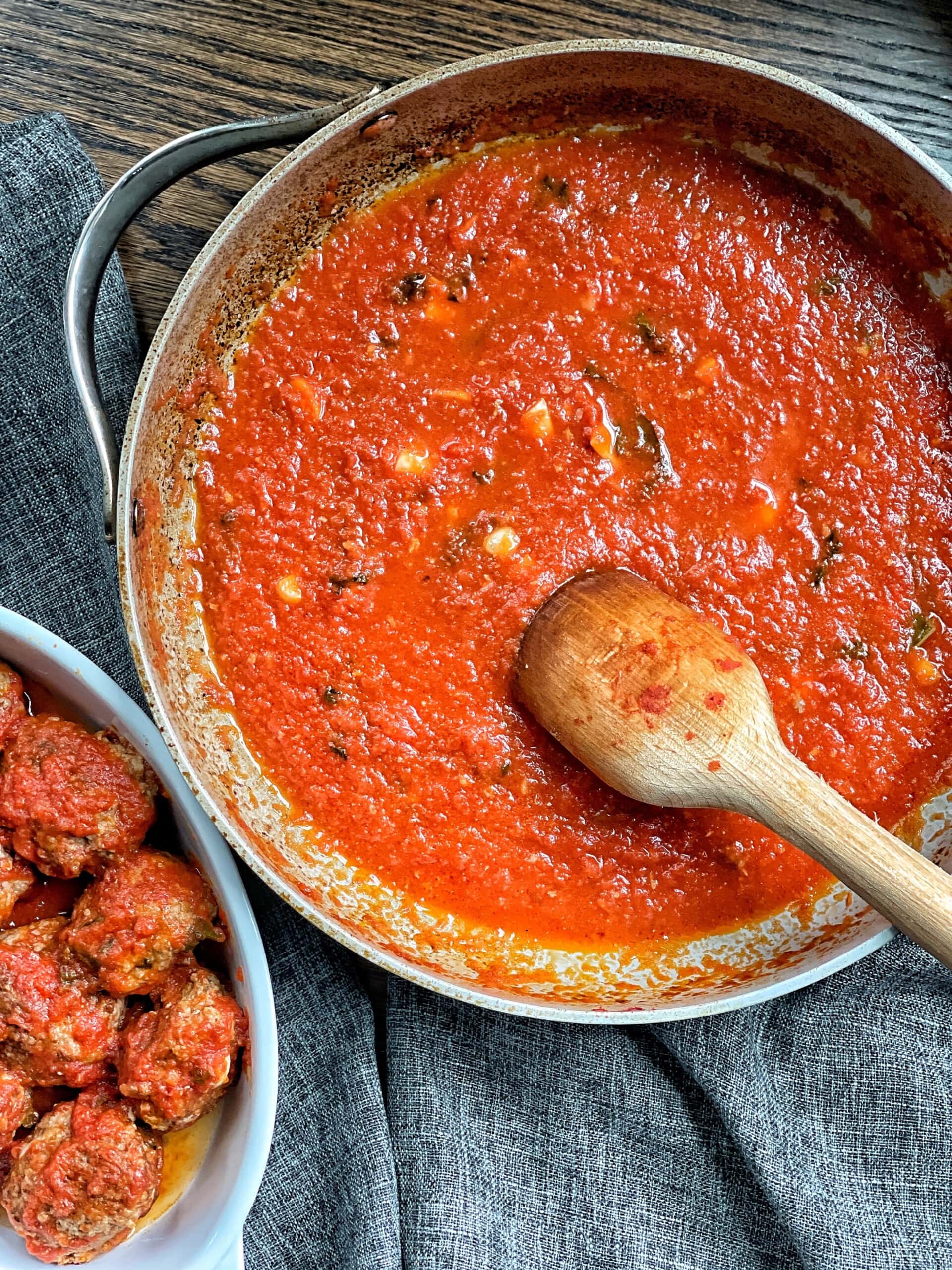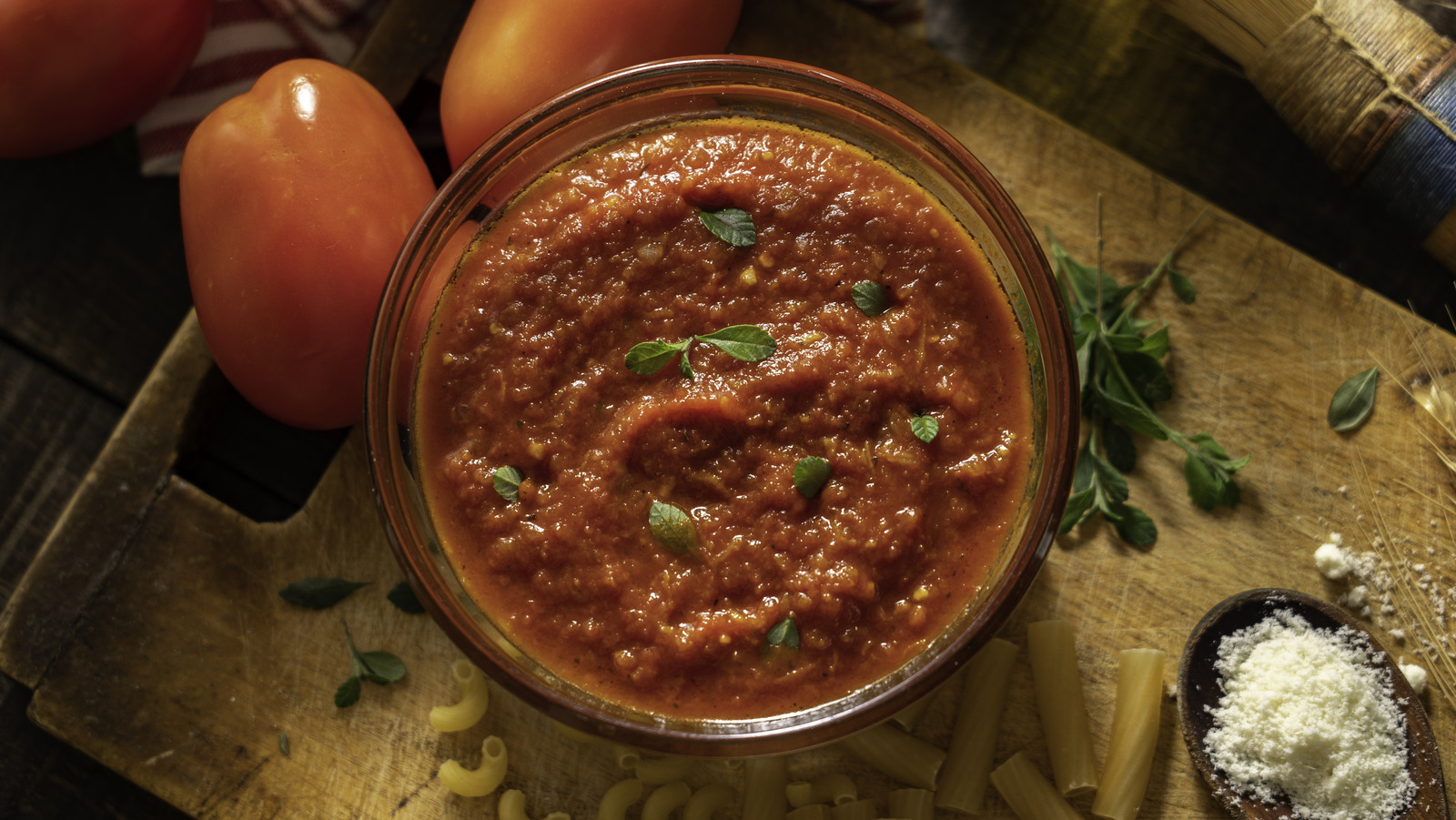Pasta is undoubtedly a beloved staple in many households. Whether it’s a classic spaghetti marinara or a creamy alfredo sauce, the key to a perfect pasta dish often lies in the sauce. However, what do you do when you find yourself with leftover pasta sauce? The thought of reheating it without compromising its texture and flavor can be daunting. Fear not, as we’ve compiled a comprehensive guide on the best methods to reheat pasta sauce. From the trusty microwave to the slow cooker, we’ve got you covered.
Leftover pasta sauce is a common occurrence in many kitchens. While it’s tempting to simply toss it out, reheating it properly can revive its deliciousness and save you from wasting food. In this guide, we’ll explore various methods to reheat pasta sauce, taking into account different types of sauces and personal preferences.
Microwave Reheating

- Preparation: Start by transferring the leftover pasta sauce into a microwave-safe container, such as a glass mason jar or a ceramic bowl. It’s important to use a container that is safe for use in the microwave to avoid any accidents.
- Adding Water: To prevent the sauce from drying out during reheating, add around two tablespoons of water to the sauce. This helps to maintain the sauce’s moisture and prevents it from becoming too thick or sticky.
- Stirring: Gently stir the water into the sauce to ensure that it is evenly distributed. This step helps to incorporate the water into the sauce and prevents any pockets of dryness.
- Covering: Place a lid on the container, but be sure not to seal it tightly. Leaving a small opening allows steam to escape during reheating, preventing pressure buildup that could cause the sauce to explode.
- Microwaving: Set your microwave to the high setting and heat the sauce in short intervals, typically around 30 seconds at a time. After each interval, remove the sauce from the microwave and give it a light stir to promote even heating.
- Checking Temperature: Use a food thermometer to check the internal temperature of the sauce. The sauce should reach a minimum temperature of 175°F (74°C) to ensure that it is thoroughly reheated and safe to eat.
- Final Adjustments: Once the sauce has reached the desired temperature, it’s ready to serve. If the sauce is too thick or has dried out during reheating, you can add a bit more water and stir to adjust the consistency.
While reheating pasta sauce in the microwave is convenient and quick, it’s important to note that it may not be the best option for certain types of sauces, particularly those that are cream-based. Cream sauces have a tendency to separate or curdle when heated too quickly, so it’s essential to use caution and monitor the sauce closely during reheating.
Stovetop Simmering

- Choosing the Saucepan: Start by selecting a small saucepan or pot that is suitable for the amount of pasta sauce you want to reheat. A saucepan with a heavy bottom helps to distribute heat evenly and prevent burning.
- Pouring the Sauce: Transfer the leftover pasta sauce into the saucepan, making sure to scrape any sauce clinging to the sides of the container. It’s important to use a saucepan that is large enough to accommodate the sauce without overflowing during heating.
- Heating the Sauce: Place the saucepan on the stovetop over medium-high heat. Allow the sauce to heat up gradually, stirring occasionally to prevent sticking and ensure even heating. Heating the sauce slowly helps to prevent scorching and preserves its flavor.
- Bringing to a Boil: As the sauce heats up, it will start to simmer and eventually come to a gentle boil. Once the sauce reaches a boil, reduce the heat to low to maintain a gentle simmer. Avoid boiling the sauce vigorously, as this can cause it to splatter and lose its texture.
- Simmering: Let the sauce simmer on low heat for approximately 10 minutes, uncovered. Simmering allows the sauce to thicken slightly and develop its flavors further. Stir the sauce occasionally to prevent it from sticking to the bottom of the saucepan.
- Adjusting Consistency: If the sauce thickens too much during simmering, you can adjust its consistency by adding a small amount of water, broth, or milk. Stir the sauce well to incorporate the liquid and achieve the desired consistency.
- Taste Testing: Once the sauce has simmered for the desired time, taste it to ensure that it is heated through and seasoned to your liking. Adjust the seasoning if necessary by adding salt, pepper, or other herbs and spices.
- Serving: Once the sauce is heated through and has reached the desired consistency and flavor, it’s ready to serve. You can ladle the sauce over freshly cooked pasta or use it as a dipping sauce for bread or appetizers.
Double Boiler Method

- Preparing the Equipment: To start, you’ll need a pot and a heatproof mixing bowl that fits snugly on top of it. The pot should be filled with 2-3 inches of water, while the mixing bowl should be large enough to hold the pasta sauce without overflowing.
- Setting Up the Double Boiler: Place the pot on the stovetop and bring the water to a simmer over medium heat. Once the water is simmering, reduce the heat to low to maintain a gentle simmer. Then, carefully place the mixing bowl on top of the pot, ensuring that it sits securely without touching the water.
- Adding the Sauce: Transfer the leftover pasta sauce into the mixing bowl. The indirect heat from the steam generated by the simmering water will gradually heat the sauce without the risk of burning or overheating.
- Stirring and Heating: Use a whisk or spoon to stir the sauce frequently as it heats. This helps to distribute the heat evenly and prevents any hot spots from forming. Continue heating the sauce for approximately 5 minutes, or until it reaches a temperature of 165°F (74°C).
- Monitoring the Temperature: It’s important to monitor the temperature of the sauce closely to prevent it from overheating or curdling. Use a food thermometer to check the temperature periodically and adjust the heat as needed to maintain a gentle simmer.
- Removing from Heat: Once the sauce has reached the desired temperature, carefully remove the mixing bowl from the pot using oven mitts or pot holders. Be cautious, as both the bowl and the sauce may be hot.
- Stirring and Cooling: Continue stirring the sauce vigorously for a few more minutes to ensure that it is evenly heated and to help it cool down slightly. This step also helps to prevent any curdling or separation of the sauce.
- Serving: Once the sauce has cooled slightly and is heated through, it’s ready to serve. You can ladle the sauce over freshly cooked pasta or use it as a topping for other dishes.
Slow Cooker Reheating

- Choosing the Slow Cooker: Start by selecting an appropriate-sized slow cooker for the amount of pasta sauce you want to reheat. Slow cookers come in various sizes, so choose one that comfortably accommodates the sauce without overcrowding.
- Transferring the Sauce: Pour the leftover pasta sauce into the slow cooker, making sure to scrape any sauce clinging to the sides of the container. You can also add any additional ingredients or seasonings at this stage to enhance the flavor of the sauce.
- Adding Liquid: To prevent the sauce from thickening too much during reheating, add a small amount of liquid to the slow cooker. This can be water, broth, or even wine, depending on your preference and the flavor profile of the sauce.
- Setting the Temperature: Set the slow cooker to the low heat setting. Cooking the sauce on low heat allows for gentle and even heating, ensuring that the sauce heats through thoroughly without burning or scorching.
- Cooking Time: Allow the sauce to cook in the slow cooker for 2-3 hours, stirring occasionally. Stirring helps to distribute the heat evenly and prevents any hot spots from forming. This extended cooking time allows the flavors to meld together and intensify, resulting in a rich and flavorful sauce.
- Adjusting Seasoning: Taste the sauce periodically and adjust the seasoning as needed. You can add more salt, pepper, herbs, or spices to enhance the flavor of the sauce to your liking.
- Serving: Once the sauce has been heated through and reaches your desired consistency and flavor, it’s ready to serve. You can ladle the sauce over freshly cooked pasta or use it as a topping for other dishes, such as meatballs or grilled vegetables.
Oven Reheating

- Preheating the Oven: Start by preheating your oven to 350°F (175°C). Preheating ensures that the oven is at the optimal temperature for reheating the sauce evenly.
- Preparing the Dish: Transfer the leftover pasta dish containing the sauce into an oven-safe dish. This could be a baking dish, casserole dish, or any other dish that can withstand high oven temperatures.
- Covering the Dish: If reheating a pasta dish with the sauce already combined, cover the dish with aluminum foil. This helps to prevent the sauce from drying out and ensures that the pasta remains moist during reheating.
- Reheating Time: Place the covered dish in the preheated oven and bake for 10-30 minutes, depending on the size and thickness of the dish. Check the dish every 5-10 minutes to ensure that it is reheating evenly and not burning.
- Checking for Doneness: After the initial reheating time, use a fork or spoon to check the temperature and consistency of the sauce. The sauce should be heated through and bubbling gently around the edges.
- Adjusting Consistency: If the sauce appears to be drying out or becoming too thick during reheating, you can add a small amount of water or broth to the dish. This helps to thin out the sauce and prevent it from becoming too dry.
- Monitoring the Reheating Process: Keep an eye on the dish as it reheats in the oven. If the sauce begins to bubble excessively or the edges of the dish start to brown too quickly, you may need to lower the oven temperature or cover the dish with foil to prevent burning.
- Final Touches: Once the sauce is heated through and the pasta dish is warmed to your liking, remove it from the oven. Allow the dish to rest for a few minutes before serving to allow the sauce to settle and the flavors to meld together.
- Serving: Serve the reheated pasta dish with sauce immediately, garnished with fresh herbs or grated cheese if desired. Enjoy your delicious meal!
Conclusion
Reheating pasta sauce doesn’t have to be a daunting task. By choosing the right method based on the type of sauce and your preferences, you can enjoy delicious pasta dishes without sacrificing flavor or texture. Whether you opt for the convenience of the microwave or the slow infusion of flavors in a slow cooker, these methods will ensure that your leftover pasta sauce tastes just as good as it did the first time around. So next time you find yourself with leftover sauce, don’t throw it out—reheat it with confidence using the techniques outlined in this guide. Happy cooking!






